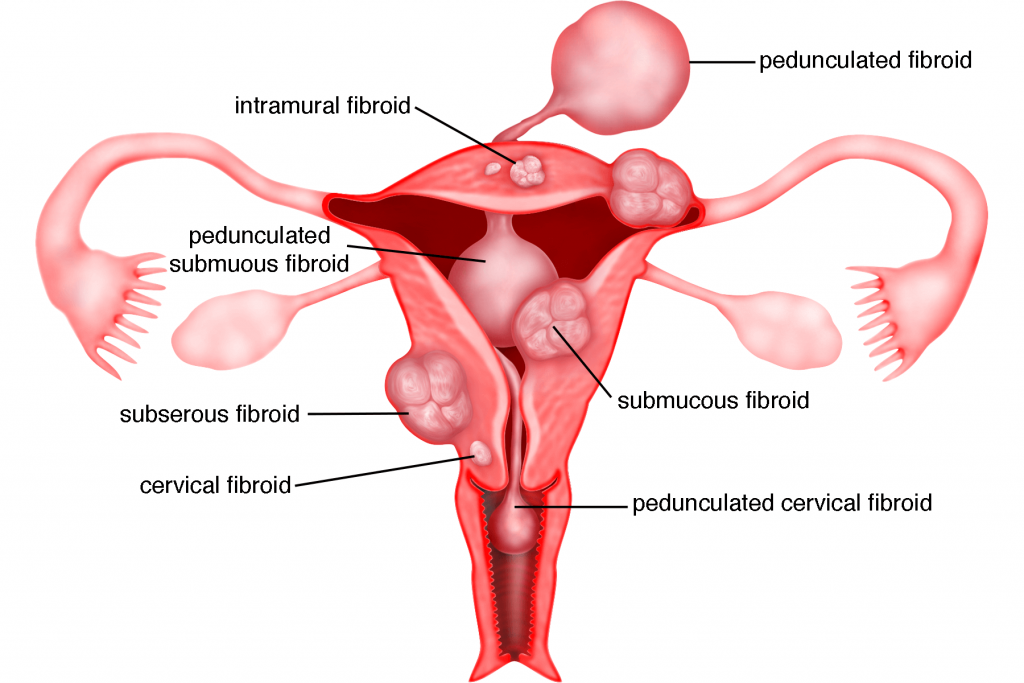In the past two years, 48-year-old Ms. Li often experienced dizziness and fatigue, and her friends also noticed that her complexion didn't look good. One day, while getting up after sitting for a long time, Ms. Li suddenly fainted. In a state of urgency, her family rushed her to the hospital for examination, only to find out that she had uterine fibroids complicated by severe anemia. Ms. Li was surprised, "I always thought I was approaching menopause, and having slightly heavier menstrual periods was normal. I even planned to improve my diet to compensate for it! I never thought it was uterine fibroids causing excessive menstrual bleeding and anemia!"
So, is it normal to have heavier menstrual periods during menopause? What are the symptoms of uterine fibroids?
Uterine fibroids are common and often encountered by women, and clinical manifestations are closely related to the location of the fibroids, their growth rate, and degeneration.

Some patients may be asymptomatic, only discovering the condition during physical examinations. Another group of patients may experience abdominal enlargement, mistaking it for obesity, but it turns out to be an enlarged uterus due to fibroids. Additionally, when fibroids are located inside the uterine cavity or between the uterine muscle walls, they can cause changes in menstruation, such as increased menstrual flow, prolonged menstrual periods, or irregular bleeding. This can lead to secondary anemia, resulting in symptoms like dizziness and fatigue, as in the case of Ms. Li mentioned above.
Furthermore, due to the bladder located in front of the uterus and the rectum located behind it, when fibroids grow to a certain size, they can compress the bladder and rectum, leading to corresponding compression symptoms such as frequent urination, constipation, lower back pain, and a sensation of pelvic heaviness.
Some fibroids can also cause dysmenorrhea, increased vaginal discharge, vaginal discharge of fluids, vaginal prolapse, acute abdominal pain due to torsion, as well as fever caused by degeneration.
Uterine fibroids can also affect the shape of the uterine cavity, block the opening of the fallopian tubes, or compress and twist the fallopian tubes, leading to infertility.
Since the clinical manifestations of uterine fibroids vary, what tests are needed to help diagnose them? The most commonly used methods for diagnosis include gynecological examinations, uterine ultrasound examinations, and pelvic magnetic resonance imaging (MRI) examinations.
Therefore, for female friends, if your menstrual cycle is regular and you have no discomfort, it is recommended to undergo gynecological examinations once a year. If you experience changes in menstruation, or have symptoms such as dizziness, fatigue, or abdominal masses, it is advisable to seek medical attention early to rule out common and prevalent gynecological conditions such as uterine fibroids.
In conclusion, uterine fibroids present with various symptoms, and early identification is crucial. Do not overlook them.
So, is it normal to have heavier menstrual periods during menopause? What are the symptoms of uterine fibroids?
Uterine fibroids are common and often encountered by women, and clinical manifestations are closely related to the location of the fibroids, their growth rate, and degeneration.

Some patients may be asymptomatic, only discovering the condition during physical examinations. Another group of patients may experience abdominal enlargement, mistaking it for obesity, but it turns out to be an enlarged uterus due to fibroids. Additionally, when fibroids are located inside the uterine cavity or between the uterine muscle walls, they can cause changes in menstruation, such as increased menstrual flow, prolonged menstrual periods, or irregular bleeding. This can lead to secondary anemia, resulting in symptoms like dizziness and fatigue, as in the case of Ms. Li mentioned above.
Furthermore, due to the bladder located in front of the uterus and the rectum located behind it, when fibroids grow to a certain size, they can compress the bladder and rectum, leading to corresponding compression symptoms such as frequent urination, constipation, lower back pain, and a sensation of pelvic heaviness.
Some fibroids can also cause dysmenorrhea, increased vaginal discharge, vaginal discharge of fluids, vaginal prolapse, acute abdominal pain due to torsion, as well as fever caused by degeneration.
Uterine fibroids can also affect the shape of the uterine cavity, block the opening of the fallopian tubes, or compress and twist the fallopian tubes, leading to infertility.
Since the clinical manifestations of uterine fibroids vary, what tests are needed to help diagnose them? The most commonly used methods for diagnosis include gynecological examinations, uterine ultrasound examinations, and pelvic magnetic resonance imaging (MRI) examinations.
Therefore, for female friends, if your menstrual cycle is regular and you have no discomfort, it is recommended to undergo gynecological examinations once a year. If you experience changes in menstruation, or have symptoms such as dizziness, fatigue, or abdominal masses, it is advisable to seek medical attention early to rule out common and prevalent gynecological conditions such as uterine fibroids.
In conclusion, uterine fibroids present with various symptoms, and early identification is crucial. Do not overlook them.
